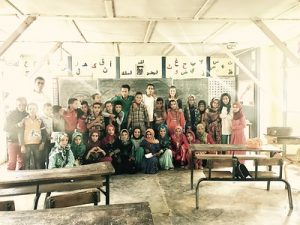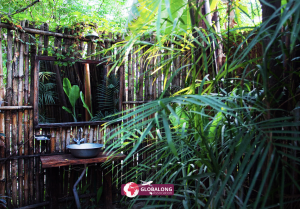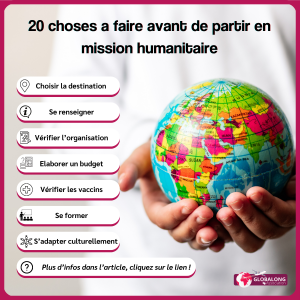Humanitarian Travel Abroad: Complete Guide to Succeeding in Your Mission
Humanitarian travel abroad is much more than just an adventure. It is a commitment that allows you to make a significant contribution to improving the living conditions of local populations. If you wish to go on a humanitarian mission, whether to provide emergency aid, teach, or participate in health and development projects, this guide will help you prepare your trip and make sure it is an unforgettable and useful experience for those you help.
What is Humanitarian Travel Abroad?
A humanitarian travel abroad involves engaging in a mission to provide direct help to local communities in need. These missions can cover different areas, including:
- Education: Teaching languages, literacy, vocational training.
- Health: Medical care, vaccination campaigns, public health education.
- Environment: Reforestation projects, waste management, beach cleanups.
- Humanitarian aid: Food distribution, infrastructure construction, refugee support.
Volunteers can thus be involved in short- or long-term projects, and the impact of these missions is usually very significant for the local communities. These missions are often carried out in partnership with NGOs or local organizations, which are responsible for managing the projects on the ground.

Why Go on Humanitarian Travel Abroad?
Going on a humanitarian mission abroad is a unique opportunity to help those in need while discovering new cultures. Here are the main reasons why many people choose this path:
- Contribute to improving living conditions: As a volunteer, you actively participate in improving the living conditions of local populations, whether by providing medical care, improving access to education, or helping with reconstruction after a natural disaster.
- Live an enriching experience: This type of travel allows you to acquire valuable human and professional skills, enrich your understanding of global challenges, and develop a more global perspective on life.
- Discover new cultures: You will have the chance to immerse yourself in different cultures, adapt to new environments, and discover ways of life you wouldn’t have encountered otherwise.
- Strengthen your social bonds: A humanitarian trip is also a collective experience where you meet other volunteers and work as a team towards a common goal. This creates strong and lasting connections.
Whether you are a student, a professional, or a retiree, humanitarian volunteering is accessible to everyone. The important thing is to be motivated by the desire to help and to be useful in a different environment.
How to Go on Humanitarian Travel Abroad?
Going on a humanitarian mission abroad requires thorough preparation. Here are the essential steps to ensure the success of your project:
1. Choose a Trusted Organization
The first step is to choose a humanitarian organization with which you want to collaborate. Many NGOs and associations organize volunteer missions abroad, but it is essential to choose a reliable structure. Here are criteria to help you choose:
- Reputation and experience: look for reviews from former volunteers and learn about the projects they have carried out. A recognized organization will have a real and lasting impact on local communities.
- Transparency: make sure the NGO is transparent about its fees, operations, and the distribution of funds.
- Projects aligned with your skills: Some projects may require specific skills. Make sure your experience and skills match the needs of the missions offered.
2. Choose the Mission That Suits You
Humanitarian missions are varied and cover different areas: health, education, community development, environment, etc. It is important to choose a mission that matches your skills and personal aspirations. Some missions are longer and require a commitment of several months, while others can be short-term. Make sure you are ready to commit for the duration of the mission.
3. Prepare for Your Humanitarian Trip
Once you have chosen your mission, it is important to prepare properly. Here are the steps to follow for optimal preparation:
- Visa and permits: Some countries require a special visa for volunteers. Research the entry conditions for the country you are going to.
- Vaccines and health: Make sure your vaccinations are up to date, especially those required by the host country. Some missions may take place in areas where health risks are present.
- Insurance: Take out a humanitarian travel insurance that covers health risks, repatriation, and accidents.
- Equipment: Depending on the mission, you may need to bring specific equipment. Check the equipment list provided by the organization.
4. Live the Humanitarian Mission on the Ground
Once on site, adapting to your new environment is essential. You will be working alongside international volunteers and the local community. Here are some tips to live your experience well:
- Respect the local culture: learn a few words of the local language, respect customs, and be open to cultural differences.
- Work as a team: solidarity is the key to the success of any humanitarian project. Learn to collaborate with your team members and support the local community members.
- Be flexible: projects may be affected by unforeseen events or changing field conditions. It is important to be flexible and patient.

Popular Destinations for Humanitarian Travel Abroad
Many regions of the world are in constant need of volunteers for humanitarian missions. Here are some of the most popular destinations:
1. Africa
African countries such as Mali, Senegal, and Uganda offer volunteering opportunities in various areas like health, education, and resource management. The needs in these countries are immense, and humanitarian missions can have a profound impact on local communities.
2. Asia
Asian countries like Cambodia, India, and Nepal are popular destinations for humanitarian missions, especially in education, health, and reconstruction after natural disasters.
3. Latin America
Countries like Guatemala, Nicaragua, and Brazil are also popular destinations for volunteers, with projects focused on education, water resource management, and improving the living conditions of rural populations.
The Challenges of Humanitarian Travel Abroad
While going on a humanitarian mission abroad is a rewarding experience, it also comes with challenges. Here are some of the obstacles you may encounter:
- Harsh living conditions: You may face challenging living conditions, especially if you are assigned to a rural or isolated area.
- Cultural shock: adapting to a new culture, new customs, and a completely different environment can be difficult at first.
- Unforeseen events and flexibility: Projects can be affected by unforeseen events or changing field conditions. It is important to be flexible and patient.
Despite these challenges, the impact you will have on the local community and the skills you will develop as a volunteer make this experience deeply rewarding.

FAQ: Frequently Asked Questions About Humanitarian Travel Abroad
1. Is humanitarian volunteering abroad free?
Not always. Some organizations require a financial contribution to cover accommodation, food, and organizational costs.
2. Do I need to speak the local language to participate in a mission?
No, although it is a plus, you can generally participate in a mission with a basic level of the local language, especially if the organization provides training.
Conclusion: A Humanitarian Travel Abroad, a Meaningful Adventure
Humanitarian travel abroad is a deeply human experience, offering both opportunities to help others and to discover yourself. By choosing a mission that matches your skills and preparing well, you can have a rewarding experience while making a meaningful contribution to communities in need. Don’t wait any longer to begin this solidary and positive adventure that will change your life as well as that of others.
Apply now and start your humanitarian adventure with Globalong.
For more information, feel free to contact us at info@globalong.com
To learn more about the Globalong Association and its members, visit Instagram, Facebook, LinkedIn and YouTube!

